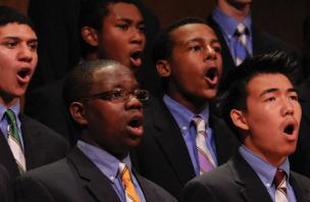
Last month I blogged, “Have Christians Stopped Singing?” I did some research, and learned that congregational singing has ebbed and flowed over the centuries. It reached a high tide when I was a young man – but that tide may be going out again. And that could be bad news for men.
First, a very quick history of congregational singing.
Before the Reformation, laypersons were not allowed to sing in church. Sacred music was performed by professionals (priests and cantors), played on complex instruments (pipe organs), and sung in an obscure language (Latin).
Reformers gave worship back to the people, in the form of congregational singing. They composed simple tunes with lyrics that people could easily memorize. Some of the tunes came out of local taverns.
A technological advance – the printing press – led to an explosion of congregational singing. The first hymnal was printed in 1532, and soon a few dozen hymns became standards across Christendom. Hymnals slowly grew over the next four centuries. By the mid 20th century every Protestant church had a hymnal of about 1000 songs, 250 of which were regularly sung. In the church of my youth, everyone picked up a hymnal and sang every verse of every song.
About a decade ago, a new technological advance – the computer controlled projection screen – entered America’s sanctuaries. Suddenly churches could project song lyrics for all to see. Hymnals became obsolete. No longer were Christians limited to 1,000 songs handed down by our elders.
At first, churches simply projected the songs everyone knew – hymns and a few simple praise songs that had come out of the Jesus Movement. People sang robustly.
But that began to change about three years ago. Worship leaders brought in new songs each week. They drew from the radio, the Internet, and Worship conferences. Some began composing their own songs, performing them during worship, and selling them on CD after church.
Years ago, worship leaders used to prepare their flocks when introducing a new song. “We’re going to do a new song for you now. We’ll go through it twice, and then we invite you to join in.”
That kind of coaching is rare today. Songs get switched out so frequently today that it’s impossible to learn them. People can’t sing songs they’ve never heard. And with no musical notes to follow, how is a person supposed to pick up the tune?
And so the church has returned to the 14th century. Worshippers stand mute as professional-caliber musicians play complex instruments, and sing in an obscure language. Martin Luther is turning over in his grave.
What does this mean for men? On the positive side, men no longer feel pressure to sing in church. Men who are poor readers or poor singers no longer have to fumble through hymnals, sing archaic lyrics or read a musical staff.
But the negatives are huge. Men are doers, and singing was one of the things we used to do together in church. It was a chance to participate. Now, with congregational singing going away, and communion no longer a weekly ordinance, there’s only one avenue left for men to participate in the service – the offering. Is this really the message we want to send to men?Sit there, be quiet, and enjoy the show. And don’t forget to give us money.
There’s nothing wrong with professionalism and quality in church music.The problem isn’t the rock band, or the lights, or the smoke machine. The key here is familiarity. When that super-hip band performed a hymn, the crowd responded. People sang. Even the men.
This post was written by David Murrow. You can find the original post here: http://churchformen.com/how-were-off-the-mark/why-men-have-stopped-singing-in-church/
BE HOLY.
BE A MAN.
 RSS Feed
RSS Feed